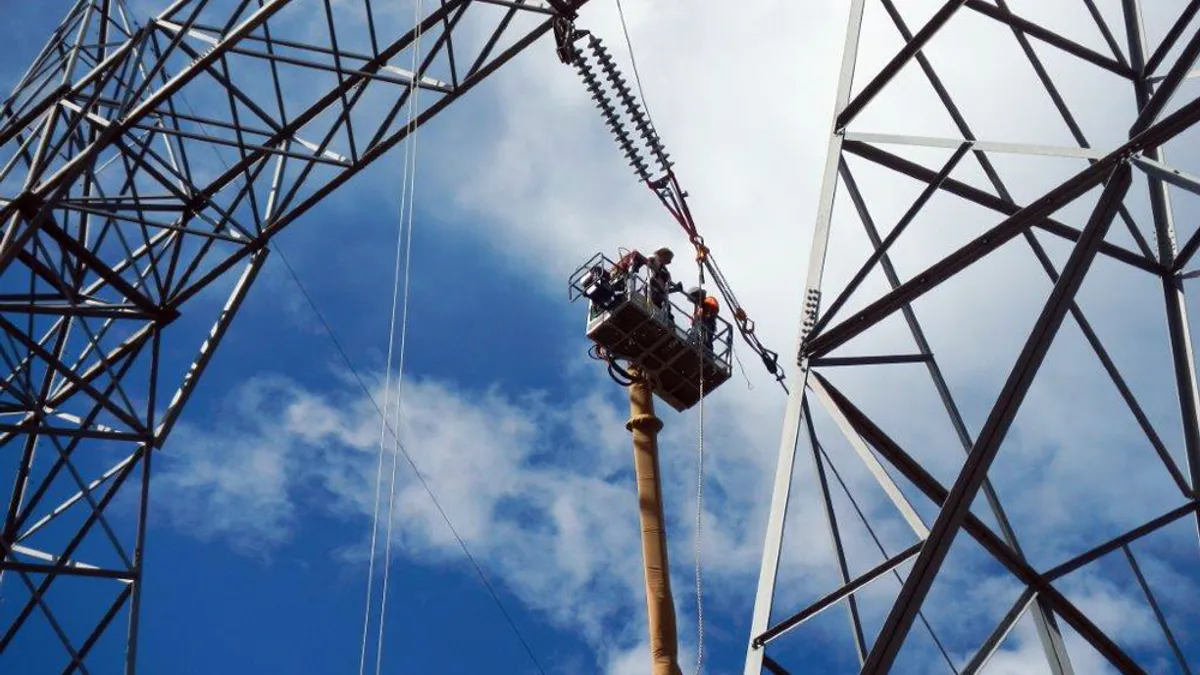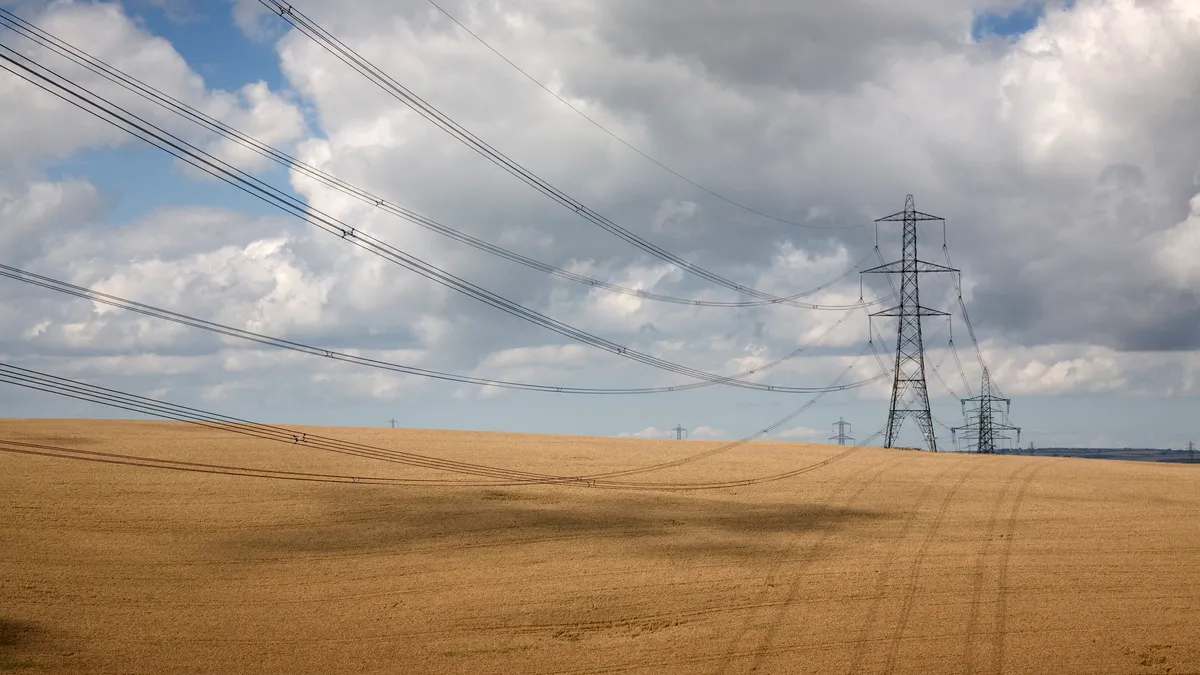Utilities and regulators have long talked about the need to build the modern "smart grid," but now a new report shows that a handful of states are actually doing something about it.
“We see things in this report that show modernization is not just talk anymore, things are being done," said Steve Hauser, CEO of the GridWise Alliance, an organization that pushes for integration of new grid technologies.
Last month, the group released its third annual Grid Modernization Index in collaboration with the energy research and analysis firm Clean Edge. The report, Hauser told Utility Dive, has some encouraging findings, like the fact that the number of smart meters with two-way communication capability passed the number of old-fashioned meters in 2013.
But the mountain of data being generated by the new advanced metering infrastructure (AMI) is adding to their burden, Hauser said, and the top states for grid modernization are beginning to pull away from the pack.
“Utilities used to operate in a data-starved environment 10 years to 15 years ago,” he said. “Now, with sensors and AMI, they have more data than they know what to do with.”
And while utilities in states with more modern grids are struggling to deal with greater quantities of data, those in states that haven't made concerted efforts to update their grid infrastructure are falling further behind.
“The challenge has been to make a business case for modernization that utilities and regulators can buy that shows a clear rationale for investing in new technologies.” Hauser said. Utilities and regulators need to understand that grid modernization “delivers benefits to consumers that consumers care about.”
Leaders pulling away
The Index ranks states on policy and agency support for grid modernization, utility rate structure engagement, and smart meters, sensors and other advanced technology deployment.
But the rankings were somewhat misleading, Hauser said, because only the top ten states were pursuing grid modernization in a significant way.
“The top ten were the only states that scored above 50. The other 40 states scored below 50 and half of those were below 25,” Hauser said. “A score below 25 means the state is doing almost nothing or, at most, just paying lip service.”
This disparity between states on progress shows “the top states have started to pull away from the rest of the field,” the Index reports.
While the difference between first and fifth place was 15 points in 2014, it increased to almost 28 points this year, the authors note.
"The top 10 states have an average overall score of 64 points," they wrote. "For the states ranked 11 through 20, the average is 41 points, representing a 36 percent decline from the top 10; for states ranked 21 through 30, the decline reaches nearly 58 percent (27 is the average score)."
"These gaps between the highest-scoring states and the next two tiers," they note, "are larger than they were in the previous GMI.
Only five states improved on their 2014 scores, with many states receiving lower scores than in the 2014 index. But Hauser said there is good news in this bleak numerical picture for two reasons.
The 2015 Index only gives states credit for advances in implementation — not planning — and the data are more accurate than in years past, Hauser said.
“The scores dropped not because the states stopped doing things but because they previously got credit for not doing things and now they don’t,” he said.
Many utilities are making important advances in grid modernization, Hauser said, including CenterPoint and Oncor in Texas, California’s Big Three IOUs, Duke Energy, Con Ed in New York, Green Mountain Power in Vermont and Vermont Electric Power.
He also recognized Vermont Electric Cooperative and a list of municipal utilities including Austin Energy and CPS Energy in Texas, the cities of Glendale, Anaheim, Pasadena, and Sacramento in California, the city of Chattanooga, Tennesee, and the city of Ft. Collins, Colorado.
Key state efforts
At least six states are making substantive advances at the state level. Among these are California's distributed resource planning proceedings and New York's Reforming the Energy Vision intiative.
The Index highlights six important state level advances:
- California’s distribution resource planning (DRP) proceeding imposed one of the most rigorous requirements for detailing grid modernization efforts ever on the state's three IOUs;
- The New York Reforming the Energy Vision (REV) proceeding imposed a comprehensive requirement for a smart meter and advanced sensor roll out that the state’s utilities have already filed plans to meet;
- Hawaii’s 100% renewables by 2045 mandate and transformative changes to net metering are already driving wide-ranging grid modernization and rate design innovations;
- Utility proposals filed to meet Massachusetts’ grid modernization initiatives included plans for smart meter growth, trials for time-of-use and critical peak pricing tariffs, and DER management systems;
- Minnesota’s e21 Initiative, which brought together utilities and private sector stakeholders in a joint effort to find policies that support grid modernization, has already produced advances in solar valuation and performance-based rate design;
- The Arizona tug-of-war over net metering have evolved into a formal proceeding expected to advance the substantive debate about the costs and values of DERs, specifically distributed solar.
But the Index’s key takeaways suggest grid modernization still faces serious obstacles, Hauser said. As long as utilities and regulators continue to view grid modernization predominantly in terms of costs to ratepayers, rather than also considering benefits, investments will likely fall short.
That risk is especially present in states with little grid modernization effort to date. In those areas, utilities and regulators may not have, for instance, evidence that grid upgrades allow faster responses to power outages.
“We started 8 years or 10 years ago when the utilities’ focus was eliminating the cost of meter readers and adding to the data they had on consumers,” Hauser explained. Those utilities that put early infrastructure in place, especially in the South, have more recently discovered much greater benefits.
"Our grid modernization efforts have led to tangible results that benefit customers,” Duke Energy Director of Grid Automation Jay Oliver told Utility Dive. “We are currently rolling out self-healing equipment on our grid. Over the past few years, we've calculated our efforts have prevented more than 400,000 customer outages, and spared our customers from 41 million minutes of interruption. That excites us as we move forward with this technology.”
Evaluating the benefits of grid modernization
In addition to utility and regulatory buy-in, customers also need to be engaged to recognize the potential benefits of grid upgrades, the Index reports. One key avenue, the authors write, could be through more dynamic rate structures that allow customers to realize the benefits of various grid and energy managment technologies.
“We are starting to learn what really works,” Hauser said. “Dynamic rates require supporting data so the utilities implementing them can design rates that effectively shape load and operate their systems more efficiently.”
But dynamic rates are only one application of smart grid infrastructure, he added. Dynamic outage management is another.
“It is not only having the data but using the data,” Hauser said. “Where there is solar, data from smart inverters can predict weather that can then help manage solar dynamically.”
Those out front on modernization say the benefits are far larger than they initially estimated because they quickly figure out how to use the data to operate their systems differently, Hauser said.
“A year and a half after the distribution management system went live, we hit our one-millionth avoided outage minute," said Heather Rosentrater, energy delivery and customer service vice president at Avista, a growing Pacific Northwest utility. "That’s a tangible benefit for our customers.”
Modernization is more than AMI, Hauser added. Sensors at the substation and the transformers are giving the utility visibility into the distribution system.
“That makes it possible to anticipate transformer outages,” he said. “The sensors tell the utility when the transformer is overloaded or starting to fail before it causes an outage so the utility has the opportunity to address the ‘outage’ before the lights are out.”
Next steps for modernization
Leadership on grid modernization varies from state to state and “there is no one-size-fits-all approach,” the Index reports in its final takeaway. Collaboration between regulators, legislatures, governors, utilities, private sector stakeholders, and customers is essential.
For years, modernization advocates were accused of wanting to spend on the new new thing "whether it was the right thing to do or not,” Hauser said. “Now observers are starting to realize utilities have made thoughtful and judicious investments and in many cases saved more than was spent.”
More than just wires and poles, grid modernization also incorporates sensors, data collection and communications, Hauser said. The era of data-starved utilities is over. The next wave is developing better data management and data-based models for operations.
“It is using data to make operations more efficient and much more adaptable for the new technologies, EVs, rooftop solar, battery storage, demand response, all the things that are coming,” he said.
Grid modernization is policy-driven because policy tends to drive what utilities do, Hauser said. Lawmakers can make utilities pay attention by mandating objectives that give utilities reasons to request new funding or rate increases.
Policies need to go beyond technologies, Hauser added. "It is time to look at how that infrastructure, the grid, is designed, built, and operated to support the technologies.”
But policy in and of itself is not enough, he said, without implementation.
“There can be lots of policies but not a modern grid. It has to be implemented.”






















